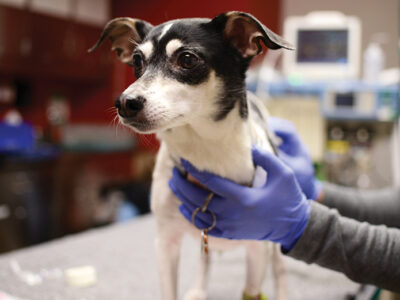
Veterinary Research | Though hundreds of people who took part in the World Trade Center cleanup have reported illnesses since 9/11, the canines deployed at the disaster site have fared well so far, according to Dr. Cindy Otto.
Three years into her study of 96 search-and-rescue dogs [“After the Search is Over,” September/October 2002], Otto, who is associate professor of critical care at Penn’s School of Veterinary Medicine, has found few lingering problems.
Blood tests conducted in the first year indicated elevated levels of toxins in the dogs’ livers, but those levels significantly dropped in the second year. In fact, Otto says, they no longer appeared different than those of a control group made up of similarly trained dogs that were not deployed at Ground Zero.
Fifteen dogs in the deployed group have died—eight of them from cancer. But according to Otto, neither the death rate nor the cancer rate differs greatly from that of the control group at this point.
“We have a small number of dogs and it’s still early, but we don’t have any evidence right now that the dogs are showing adverse effects,” she says. Some conditions, such as mesothelioma—a cancer caused by asbestos exposure—might take five years to show up in a dog (which is still much earlier than it would be seen in humans). The American Kennel Club and the AKC Canine Health Foundation renewed a grant that will allow Otto to study the dogs for two more years.
In a companion study, Dr. Melissa Hunt in Penn’s psychology department is tracking the human handlers to see how they’ve been coping. Hunt says she is still collecting and analyzing the data.
Having volunteered as a veterinarian at Ground Zero, Otto has a few ideas to improve dog-safety at future disaster sites, such as enforcing more rigorous rest cycles and making sure there are adequate places for dogs to eat and drink.
Another recommendation—to set up a central registry for rescue dogs—is “based on our frustration at not knowing how many dogs were there,” Otto says. When future disasters strike, handlers could sign in, get their credentials checked to ensure they are qualified to assist, and afterwards be tracked to make sure no problems arise. “There is no doubt we had some well-meaning people [at Ground Zero] who had no training for that kind of environment,” Otto says. Most of the dogs she studied were trained through the Federal Emergency Management Agency and were well prepared for working in urban disaster sites.—S.F.




